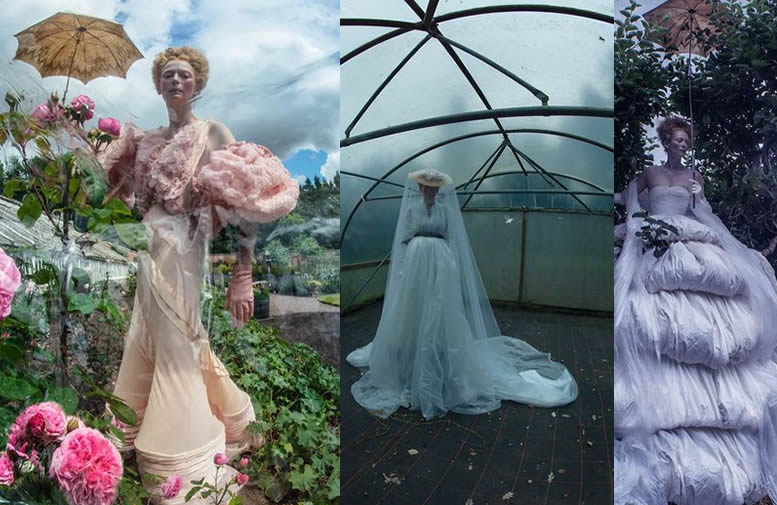Tilda Swinton is one of the most enigmatic and versatile performers in modern cinema. Known for her androgynous features, ethereal presence, and ability to disappear into a wide range of roles, Swinton has carved a unique space for herself, not just in Hollywood but in the broader world of art and performance.
Born Katherine Matilda Swinton on November 5, 1960, in London, Swinton’s background is as eclectic as her career choices. Raised in an aristocratic Scottish family, she attended elite schools, including Cambridge, where she studied social and political sciences. While many of her peers might have pursued careers in politics or academia, Swinton was drawn to the world of performance art and theatre.
Her acting journey began in the 1980s, performing with experimental theater groups like the Royal Shakespeare Company.
Swinton’s breakout role came in 1992 with Orlando, based on Virginia Woolf’s gender-bending novel. In the film, she plays a nobleman who lives for centuries and changes gender along the way. This role perfectly encapsulated Swinton’s fluidity as a performer and set the stage for her to become one of the most daring actors of her generation. Her portrayal of Orlando blurred the lines between male and female, old and young, creating a timeless character that seemed to resonate with Swinton’s own ethereal presence.
Tilda Swinton’s reach extends far beyond traditional cinema. She has long been associated with the world of contemporary art and fashion. In 1995, she collaborated with artist Cornelia Parker on the performance piece The Maybe, where she spent several days sleeping inside a glass box at the Serpentine Gallery in London. This unconventional piece reinforced Swinton’s position as a performer who lives at the intersection of art and life.
Her striking looks and avant-garde style have also made her a muse for some of the world’s most renowned fashion designers. She has frequently worked with fashion houses like Chanel and Haider Ackermann, embodying an otherworldly sense of elegance and rebellion. Swinton’s style, much like her acting, defies easy categorization, blending high fashion with a sense of individualism and artistic expression.
A Life Away from the Spotlight
Despite her fame and critical acclaim, Swinton maintains a life far removed from the typical Hollywood glitz. She lives in the remote Scottish Highlands with her family, embracing a lifestyle that is grounded in nature and community. Her choice to live outside the spotlight reflects her unconventional career path—Swinton has always been more interested in the art of performance than in the trappings of fame.
Swinton’s personal life, like her career, defies convention. She has openly spoken about her non-traditional relationships and her fluid approach to life, further cementing her as a figure who is constantly evolving. She remains deeply connected to Scotland, often collaborating with local artists and filmmakers, reinforcing her status as a global icon who stays rooted in her heritage.
Tilda Swinton’s Legacy: The Art of Transformation
Tilda Swinton’s body of work and her personal ethos both speak to a philosophy of transformation and exploration. She is a performer who refuses to be pigeonholed, continuously seeking out roles that challenge and redefine what it means to be an actor. Her collaborations with directors like Luca Guadagnino, the Coen Brothers, and Bong Joon-ho showcase her ability to adapt to any environment, seamlessly shifting from mainstream blockbusters to experimental art films.
Her contribution to film, art, and culture transcends the screen—Swinton has become a symbol of creativity without limits, proving that true artistry lies in the ability to constantly reinvent oneself.
Her connection to Princess Diana
Tilda Swinton has a unique and little-known connection to Princess Diana, rooted in their shared aristocratic backgrounds and schooling. Both Swinton and Diana attended the prestigious West Heath Girls’ School in Kent, England, during their formative years. While the two women were at the school at the same time, they were not especially close, largely due to their different social circles and interests.
Swinton has spoken about their time at West Heath, acknowledging that while she and Diana were classmates, they led very different lives even within the same school environment. Diana, already showing early signs of her future public persona, was well-liked, outgoing, and considered by many to embody the grace and charm she would later be known for as the Princess of Wales. Swinton, on the other hand, felt out of place at West Heath, where she struggled with the school’s rigid expectations and conventional social atmosphere.
Swinton has described feeling like a misfit during her time at the school, later transferring to Fettes College in Edinburgh, which further separated her from the typical upper-class life trajectory. This early sense of alienation may have influenced Swinton’s subsequent career choices, pushing her toward more avant-garde and experimental work in contrast to Diana’s very public, traditional royal path.
While Swinton and Diana both emerged as prominent figures in vastly different worlds, their connection at West Heath highlights the interesting intersection of aristocratic life and public attention that both women navigated in their own ways. Their lives took them in radically different directions—Diana becoming a global icon of compassion and tragedy, and Swinton evolving into one of the most innovative actors in the world. Yet, their shared past at West Heath remains an intriguing footnote in the history of both women.

